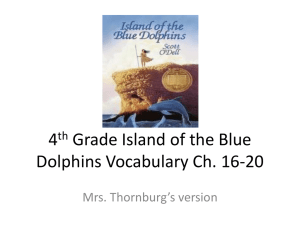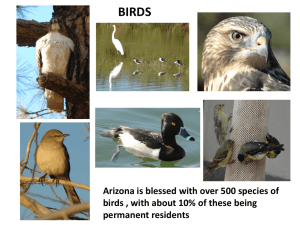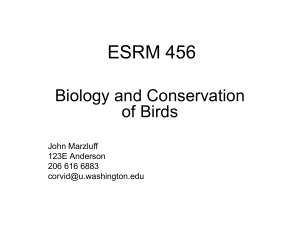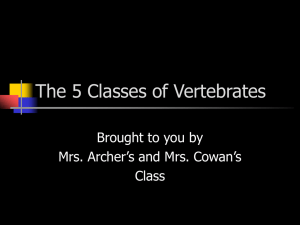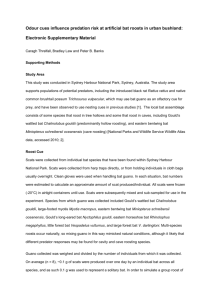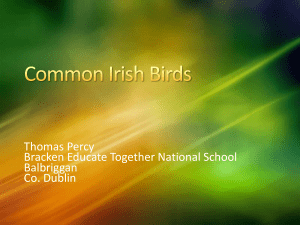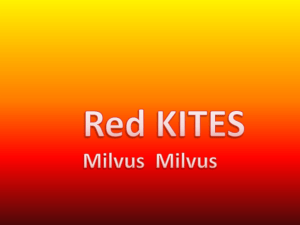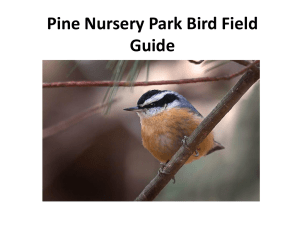Wildlife
advertisement
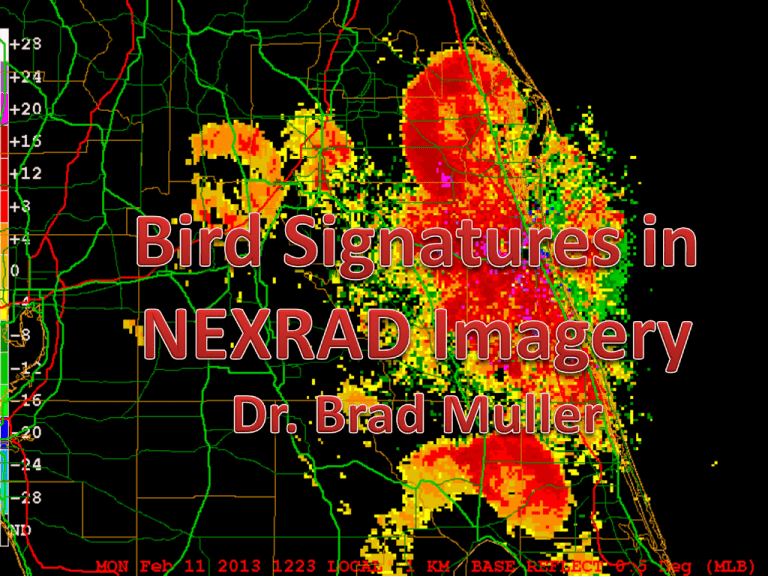
Birds often show up early in the morning in NEXRAD as “roost rings.” • These represent birds taking of from a location where they were roosting for the night, then spreading out into a ring visible on the radar. The birds show up when they reach the altitude of the radar beam. • The following animations show "roost rings" caused by birds and captured on NEXRAD. Roost Rings--NWS Greenbay Roost Rings, Yuma AZ Roost Ring near Lake Okeechobee Roost Rings near Melbourne FL Roost Rings with approaching squall line Clear-air vs. precip. mode: • Birds generally show up more prominently in NEXRAD’s clear-air mode (below left) than in precipitation mode (below right) because clearair is a more sensitive mode of radar operation. Sometimes birds show up as “blobs” of echoes and not just as rings (see animation). Velocity signatures can be used to help discriminate birds from other echo sources. • According to Martin and Shapiro (2007), and Wilson et al. (1994), "insects [emphasis mine]are the most common cause of clear air echoes.“ • Martin and Shapiro state that birds can affect doppler velocity estimates, while the presence of insects usually does NOT cause bias in the estimates. • In other words, insects are small and blow with the wind, so their doppler velocity is the same as that of the environment, while birds are large and fast, and therefore usually fly differently than the background wind. Direct Observations of Birds: The week of Feb. 4-9, 2013. • On February 6, 2013, a roost ring on the NWS Melbourne radar was observed lifting off from a point near Lake Poinsett, west of Merrit Island, Florida, near I-95 and State Road 520, and flying north towards Daytona. Birds take off before dawn. Flock spreads to a ring—note sunrise spike. Ring spreads toward Daytona. Doppler velocity shows birds traveling differently than wind—outbound from the radar at as much as 26 kts. • Visual observations from the roof of the College of Aviation Building viewing south with binoculars revealed the presence of flocks of birds, probably numbering in the hundreds; identification was not possible. Subsequent days showed repeated examples from the same location, so Applied Meteorology Program Coordinator, Dr. Fred Mosher, made an in-person visit to the apparent origin of the rings, near Lake Poinsett. He captured several photographs of thousands of tree swallows flying west at sunset to roost in the area northeast of the lake. Lake Poinsett at sunset. Birds were flying from the west to roost northeast of the lake. Heading “home” to roost. Radar signature of tree swallows preparing to roost for the night—note sunset spike. Tree swallows reportedly spend the winter in Florida and other parts of the Gulf Coast, and can often be seen swarming. References: Martin, W. J., and A. Shapiro, 2007: Discrimination of Bird and Insect Radar Echoes in Clear Air Using High-Resolution Radars. J. Atmos. Oceanic Technol., 24, 1215-1230. Wilson, J. W., T. M. Weckwerth, J. Vivekanandan, R. M.Wakimoto, and R. W. Russell, 1994: Boundary layer clear-air radar echoes: Origin of echoes and accuracy of derived winds. J. Atmos. Oceanic Technol., 11, 1184–1206.
